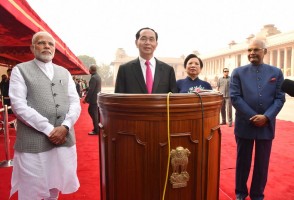
Rising imports hinder growth of India’s paper industry
Sai Nikesh | The Dollar Business
Large scale new investments planned in India’s paper industry with an estimated current turnover of Rs 50,000 crore, have been put on a backburner as a result of rise in cheap imports, Indian Paper Manufacturers’ Association (IPMA) told The Dollar Business, on Thursday. In this regard, it said, “We have asked the government to impose 10% special additional duty on imports of paper and paperboard on actual use basis and for bringing the basic customs duty on import of the same from ASEAN countries back to the Most Favoured Nation (MFN) rate.” The government was also asked to review all existing Free Trade Agreements (FTAs) and to keep ‘paper’ in the negative list in all existing and upcoming FTAs like Regional Comprehensive Economic Partnership (RCEP), till a level playing field is attained in the domestic market, IPMA informed. Sanjay Singh, president, IPMA, said, “We were highly emboldened by the ‘Make in India’ initiative. However, imports continue unabated and several players are wary of further investments, which is highly unfortunate as investments in paper industry not just aid in enhancing manufacturing footprint in India, but agro-forestry too.” According to him, in order to achieve economies of scale and compete internationally, the organised paper industry in India has invested heavily in technology upgradation, capacity creation and in the last five years alone, an investment to the tune of Rs 25,000 crore has been made. However, capacity utilization and capital productivity remained at an all-time low with cheaper imports increasingly capturing a greater share of the growing domestic market, he added. So, millions of farmers involved in agro-forestry and earning livelihood will be impacted if investments are compromised and imported paper is allowed to meet the growing demand, he noted further. IPMA’s decision on ‘seeking duty on imports’ was aimed at ensuring that ‘capital already invested and proposed to be invested in further capacity creation by paper and paper board industry in India is safeguarded and incentivized’. According to the Association, an investment of Rs 90,000 crore is required by 2026 to meet the projected domestic demand and the consumption volume is projected at 40 million tonnes by 2026 from the current 14 million tonnes. However, industry is dis-incentivised to invest further as the return on investment has not been encouraging in recent times. And, in most of the cases, cost of imported paper remained lower than that of production cost in India and the raw material cost has gone up in India in recent years. For instance, wood prices in the country have doubled in the last two years and currently, mill-delivered wood prices in India range between $175-200 per tonne against average price of $100 per tonne in other Asian countries, which find India as one of the most promising and growing markets. With this, excess capacities in Asian countries are being dumped into India and on the other side, with the US, EU imposing huge safeguard duties on imports, India emerged as a lucrative market for undervalued and dumped paper, noted IPMA. IPMA data showed that, in the last four years, imports of paper and paperboard (excluding newsprint) have risen at a Compound Annual Growth Rate (CAGR) of 21% and 18% respectively, in terms of value and volume. While they have gone up from Rs 3,411 crore (2010-11) to Rs 7,222 crore (2014-15) in terms of value, 0.54 million tonnes (2010-11) to 1.01 million tonnes (2014-15) was the rise witnessed in terms of volume. Additionally, under the India-ASEAN FTA, import duties on the said-items declined to nil from January 1, 2014 and imports of the same items (excluding newsprint) from ASEAN, in the last four years, have risen at a CAGR of 39% in terms of value.
July 16, 2015 | 5:43 pm IST.





 to success.
to success.